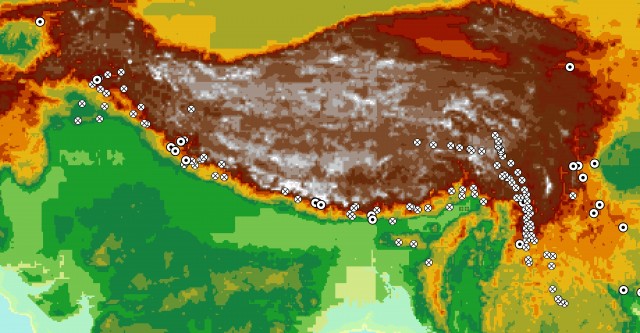The untold story from Uttarakhand by Ravi Chopra (Excerpt from 'The HINDU')
The impact of the floods on Uttarakhand’s tourism leads to larger
questions of what kind of development Himalayan States should pursue.
Before delving into that, it is important to understand the nature of
the rainfall that deluged the State. Already several voices are arguing
that the deluge is a random, ‘freak’ event. Odisha’s super cyclone in
1999, torrential rains in Mumbai in 2005, and now the Uttarakhand
downpour constitute three clear weather related events in less than 15
years, each causing massive destruction or dislocation in India. These
can hardly be called ‘freak’ events.
Several reports from the Intergovernmental Panel on Climate Change
(IPCC) have repeatedly warned that extreme weather incidents will become
more frequent with global warming. We are already riding the global
warming curve. We will have to take into account the likelihood of more
frequent extreme weather events when planning for development,
especially in the fragile Himalayan region where crumbling mountains
become murderous.
In the 1990s, when the demand for a separate State gained momentum, at
conferences, meetings, workshops and seminars, Uttarakhandi people
repeatedly described the special character of the region. Consciousness
created by the pioneering Chipko Andolan raised the hopes of village
women that their new State would pursue a green development path, where
denuded slopes would be reforested, where fuel wood and fodder would be
plentiful in their own village forests, where community ownership of
these forests would provide their men with forest products-based
employment near their villages instead of forcing them to migrate to the
plains, where afforestation and watershed development would revive
their dry springs and dying rain-fed rivers, and where the scourge of
drunken, violent men would be overcome.
Year after year — in cities, towns and villages — they led
demonstrations demanding a mountain state of their own. Theirs was a
vision of development that would first enhance the human, social and
natural capital of the State. Recalling the tremendous worldwide impact
of the Chipko movement, Uttarakhandi women dreamed of setting yet
another example for the world of what people-centric development could
look like.
But in the 13 years after statehood, the leadership of the State has
succumbed to the conventional model of development with its familiar and
single-minded goal of creating monetary wealth. With utter disregard
for the State’s mountain character and its delicate ecosystems,
successive governments have blindly pushed roads, dams, tunnels, bridges
and unsafe buildings even in the most fragile regions.
In the process, denuded mountains have remained deforested, roads
designed to minimise expenditure rather than enhance safety have
endangered human lives, tunnels blasted into mountainsides have further
weakened the fragile slopes and dried up springs, ill-conceived
hydropower projects have destroyed rivers and their ecosystems, and
hotels and land developers have encroached on river banks.
Yes, wealth has been generated but the beneficiaries are very few — mainly in the towns and cities of the southern terai
plains and valleys where production investments have concentrated. In
the mountain villages, agricultural production has shrivelled, women
still trudge the mountain slopes in search of fodder, fuel wood and
water, and entire families wait longingly for an opportunity to escape
to the plains.
Last week’s floods have sounded an alarm bell. To pursue development
without concern for the fragile Himalayan environment is to invite
disaster. Eco-sensitive development may mean a slower monetary growth
rate but a more sustainable and equitable one.
(The writer is Director, People’s Science Institute, Dehra Dun and Member (Expert), National Ganga River Basin Authority)
Praful Rao,
Kalimpong,
Darjeeling district.































